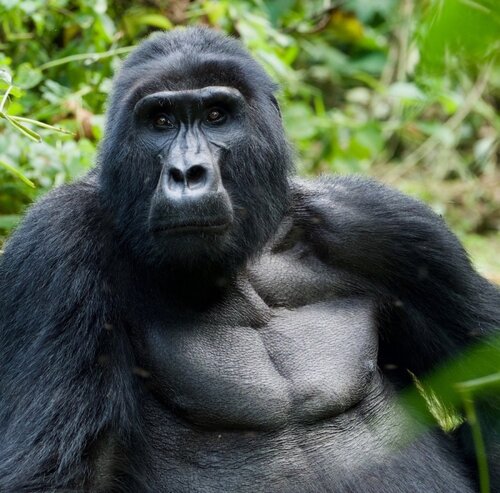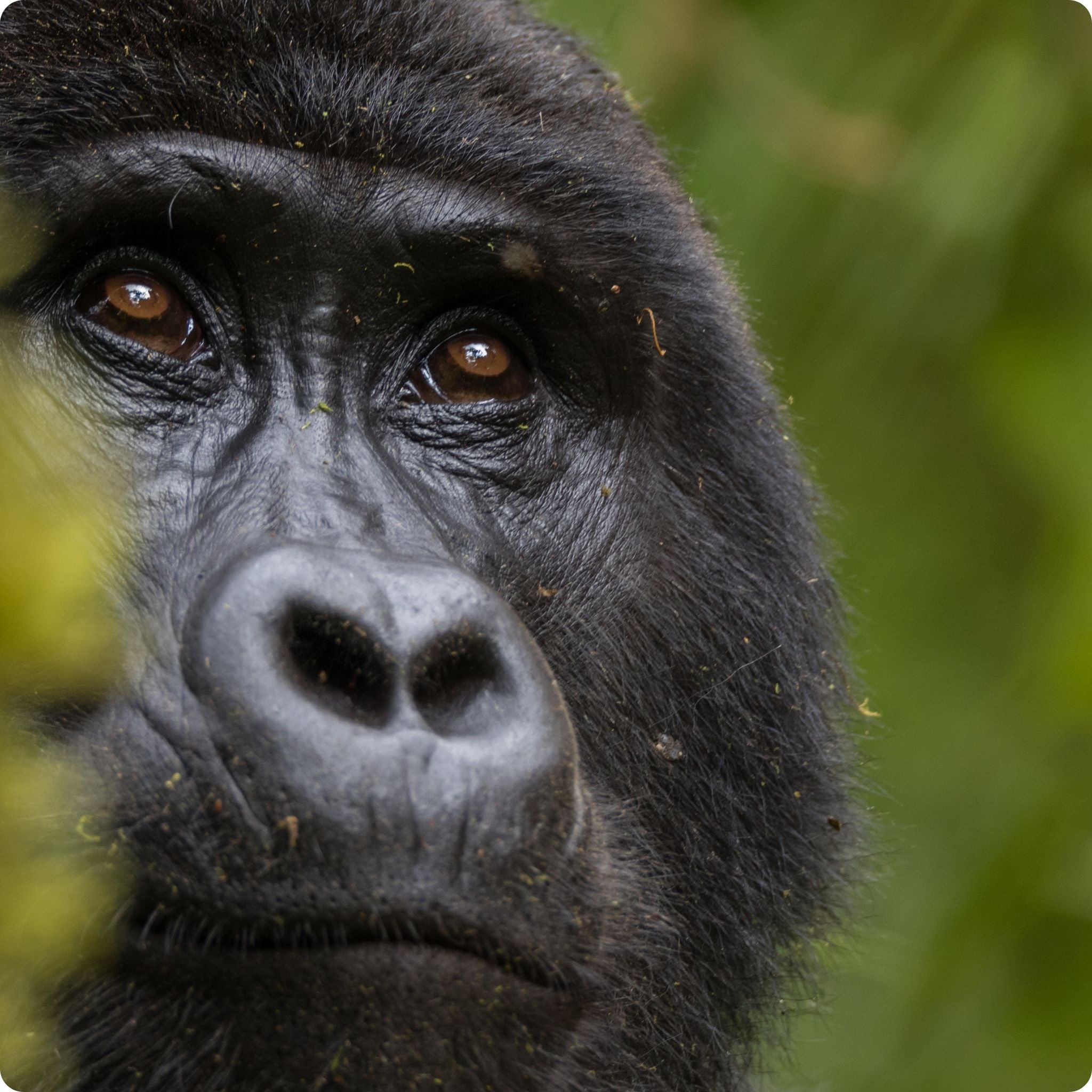
Mountain Gorilla
Learn all about the mountain gorilla with our super stats, wow your friends with some fascinating gorilla facts, read about how the mountain gorilla is one of our closest relatives, where they live, how they spend their day and what they eat. Read about what makes the mountain gorilla so important and how their future is under threat.
Our closest relatives!
The mountain gorilla is one of two subspecies of the eastern gorilla and are also some of our closest relatives, sharing 98% of their DNA with humans. They are highly intelligent and have been observed using sticks as tools and have have even learned simple human sign language in captivity. Another sign of intelligence is the gorilla’s communication abilities; they’ve been recorded making 25 different sounds.
Where do mountain gorillas live?
Mountain gorillas are found in just two small populations; just over half live in the Virunga mountains, a range of extinct volcanoes that border the Democratic Republic of Congo, Rwanda and Uganda. The other can be found in the Bwindi Impenetrable national park in Uganda.
Mountain gorillas live in forests high in the mountains, at heights of up to 4,000 metres. Their thick fur helps them to survive the often freezing temperatures. As humans have moved into their territories, the gorillas have been forced to live further and further up the mountain where the conditions can be cloudy, misty, and cold, and food is much more difficult to find.

How do mountain gorillas spend their day?
Gorillas live in groups or ‘troops’ of up to 30 individuals and are organised in a fascinating social structure led by one dominant, older ‘alpha male’, often called a silverback because of the patch of silver hair on his back and hips. The troop will include females and their offspring as well as other young males.
 The troop has a home range and the leader organises activities such as nesting, eating and moving about the range. Gorillas sleep in nests made of leaves and branches.
The troop has a home range and the leader organises activities such as nesting, eating and moving about the range. Gorillas sleep in nests made of leaves and branches.
Mountain gorillas are in most cases gentle giants and can even be quite shy unless they are threatened or challenged. When disturbed, the alpha male can display incredible physical power, standing upright, charging or pounding his chest and unleashing a loud roar. It is estimated that gorillas may be up to 10 times stronger than an average human with a bite force double that of the lion!
Females usually give birth to just one infant after a nine month pregnancy, the same as humans. A female will give birth every four to six years and in total just three or four times in their life. Newborn gorillas are tiny, weighing under 2 kg and will ride on their mothers’ backs for the first two or three years of their life. Young gorillas are much like human children and spend their days playing, climbing trees, swinging from branches and chasing one another.
What do mountain gorillas eat?
Mountain gorillas are mainly herbivores and their diet consists mostly of leaves, shoots and stems. They will also feed on bark, roots, flowers, fruit and small insects. The vegetation at the bottom of their mountain home is dense but becomes more sparse as they climb higher.
An adult male gorilla can eat up to 34kg of food each day, whereas the females eat around 18kg. The size of their home range is greatly influenced by the availability of food. Gorillas hardly drink water as they usually hydrate from eating plants.

Why are mountain gorillas so important?
Mountain gorillas play an important role in their environment. Their large appetites for vegetation helps maintain a natural balance in the food chain as well as playing a vital role in seed dispersal – many large fruit trees reply on these roaming animals to survive.
Gorillas also greatly benefit the local community by way of ecotourism. It is estimated that one mountain gorilla can indirectly generate over £2.5 million over its lifetime from tourist income.




